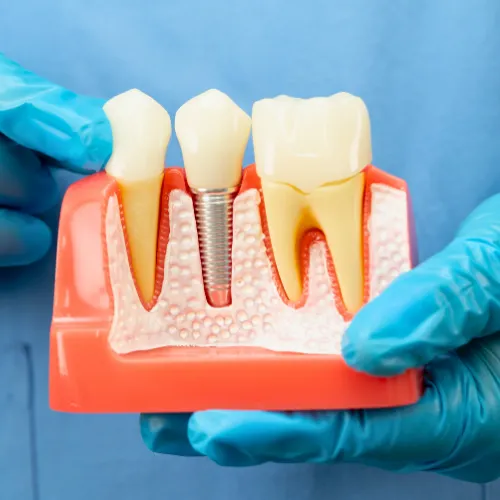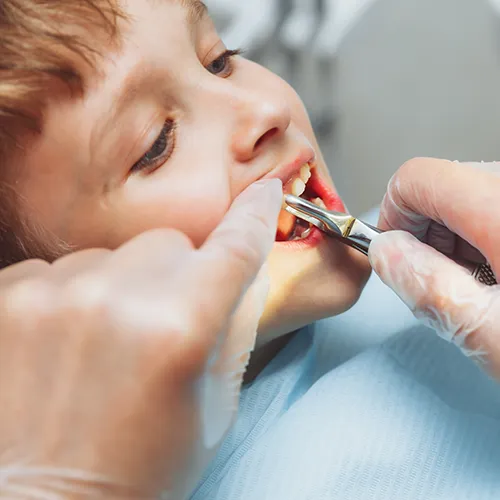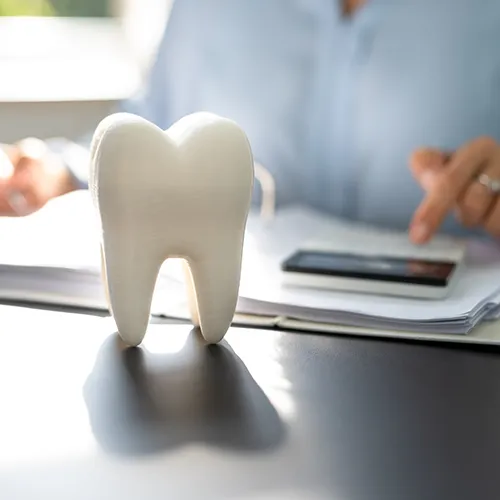Restorative Dentistry, Implant Dentistry
The Future in Your Smile: How Dental Implant Technology Has Transformed Tooth Replacement
Dental implants have come a long way from the days when replacing a missing tooth meant living with loose dentures or awkward bridges. Today, thanks to cutting-edge technology and advanced surgical precision, dental implants not only restore your smile but also feel and function like real teeth. At Vartanian Dental Group, we’ve seen firsthand how this technology has changed lives—allowing patients to chew, laugh, and smile with full confidence again.
What Makes Modern Dental Implants So Advanced
Dental implants are essentially artificial tooth roots, typically made of biocompatible titanium or zirconia, surgically placed into your jawbone. Once the implant fuses with the bone—a process called osseointegration—it provides a stable foundation for a replacement crown, bridge, or even a full set of teeth.
But what’s truly remarkable is how technology has refined every stage of this process. From 3D imaging that maps your jawbone in detail to computer-guided surgery that ensures precision placement, implant dentistry today is more predictable and less invasive than ever.
Let’s look at some of the key technologies that make dental implants the gold standard for tooth replacement.
1. 3D Imaging and Digital Scanning
Before an implant is even placed, detailed 3D imaging helps us understand the shape, density, and depth of your jawbone. Cone Beam Computed Tomography (CBCT) scans create a digital map of your mouth, revealing bone structures, nerves and sinus locations.
This ensures the implant is positioned in the most optimal spot—not just for stability, but also for aesthetics and comfort. Digital scanning also eliminates the need for messy impressions, giving us precise digital models that guide every step of the restoration.
2. Computer-Guided Surgery
Technology has made implant surgery more accurate than ever. With computer-guided systems, we can plan and simulate your procedure before even touching your mouth. This virtual surgery ensures the implant fits perfectly in both angle and depth, minimizing trauma and healing time.
The result? Shorter procedures, smaller incisions, and faster recovery—all with better long-term outcomes.
3. Improved Materials: Titanium and Zirconia
Titanium has long been the gold standard for implants because of its strength and ability to fuse seamlessly with bone. However, newer alternatives like zirconia implants are now available for patients who prefer metal-free options. Zirconia is tooth-colored, highly biocompatible, and resistant to corrosion—making it ideal for patients with allergies or cosmetic concerns.
4. Surface Technology and Osseointegration
One of the most exciting advancements lies in how implant surfaces are treated. Modern implants aren’t smooth; their surfaces are textured or coated with biocompatible materials that encourage faster bone bonding.
This enhanced osseointegration means implants are more stable and can sometimes support restorations sooner than before.
5. Immediate Load Implants
In the past, patients had to wait months before getting their final crown. Now, with immediate load technology—sometimes called “teeth in a day”—we can place a temporary restoration right after surgery.
That means you can walk out of the clinic with a new smile the same day your implant is placed, rather than waiting through the traditional healing period.
6. CAD/CAM Restorations
Once your implant is placed, the visible part—the crown—is designed using Computer-Aided Design and Computer-Aided Manufacturing (CAD/CAM) technology. This allows us to create perfectly shaped, custom-matched crowns in less time and with extreme precision.
Every detail, from the color to the bite alignment, is digitally controlled to ensure your new tooth blends seamlessly with your natural smile.
Who is a good candidate for dental implants?
A good candidate for dental implants is someone with healthy gums, sufficient bone density, and overall good oral hygiene. Ideal candidates are adults whose jawbones have fully developed and who are committed to maintaining their oral health after treatment.
If you’ve lost a tooth due to decay, injury, or gum disease—but your bone is healthy enough to support an implant—you’re likely eligible. Even if you’ve been missing a tooth for years, bone grafting and regeneration procedures can rebuild lost bone and make you a candidate.
Smokers and patients with uncontrolled diabetes may require additional evaluation, as healing may take longer. However, technological advances like bone graft substitutes and platelet-rich plasma (PRP) therapy have made implants more accessible to a wider range of patients than ever before.
What are the advantages of dental implants?
The biggest advantage of dental implants is that they look, feel, and function like natural teeth. Unlike removable dentures, implants fuse directly to your jawbone, providing a stable and permanent solution.
Other major benefits include:
Preserving bone health: When a tooth is lost, the bone beneath it begins to shrink. Implants stimulate the bone just like real teeth, preventing deterioration.
Restoring full function: You can eat your favorite foods again—no slipping or clicking.
Long-lasting results: With proper care, implants can last a lifetime.
Protecting surrounding teeth: Unlike bridges, implants don’t require grinding down neighboring teeth for support.
Boosting confidence: Because implants are secure and natural-looking, patients often report feeling more confident when speaking or smiling.
Technological advances like digital implant mapping and same-day restorations make these benefits more attainable and consistent for every patient.
What is the success rate of dental implants?
Dental implants have a success rate of around 95 to 98 percent, depending on the patient’s health, bone density, and post-surgery care. This is one of the highest success rates in all of dentistry.
Success begins with proper planning. 3D imaging and computer-guided placement ensure that the implant is perfectly aligned with your bone structure, reducing the risk of failure. The materials used—especially medical-grade titanium and zirconia—are designed to last for decades without corrosion or movement.
Post-surgery care also plays a crucial role. Regular brushing, flossing, and professional cleanings help maintain both the implant and surrounding gums. Avoiding smoking and maintaining overall health contribute to longevity.
Many patients are surprised to learn that their implants can last the rest of their lives, with the crown being the only part that may need replacement after 10 to 15 years due to normal wear.
The Art and Science of Modern Smiles
The best part of today’s dental implant technology is how seamlessly art and science come together. The precision of digital planning combines with the artistry of custom design to create results that are not only functional but also beautiful.
Implant dentistry is no longer just about replacing teeth—it’s about rebuilding confidence, restoring function, and renewing your quality of life. Whether you need a single tooth replaced or a full-mouth restoration, implants offer a natural, durable, and future-ready solution.
At Vartanian Dental Group, we use state-of-the-art imaging, computer-guided surgery, and advanced restorative techniques to make your implant journey as smooth and successful as possible. Our focus is on delivering long-term comfort, stability, and a smile you can truly be proud of.
Schedule Your Consultation Today
If you’ve been living with missing teeth or an uncomfortable denture, it’s time to explore what modern dental implant technology can do for you. Schedule an appointment with Vartanian Dental Group today, and let’s create a personalized plan to restore your smile—comfortably, beautifully, and for life.



































Best smiles Mission Viejo, CA
#VartanianDentalGroup
Check us out and follow our accounts on the following social media platforms for more healthy smiles....